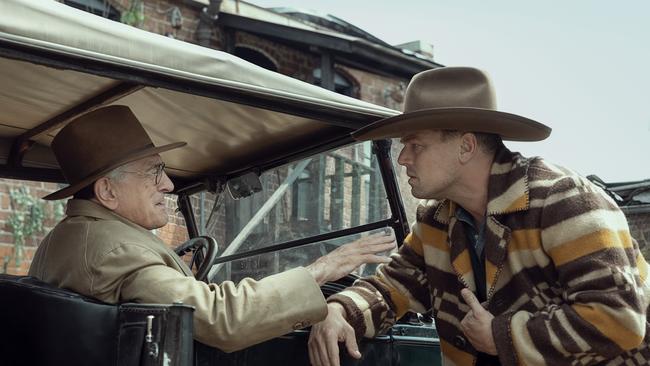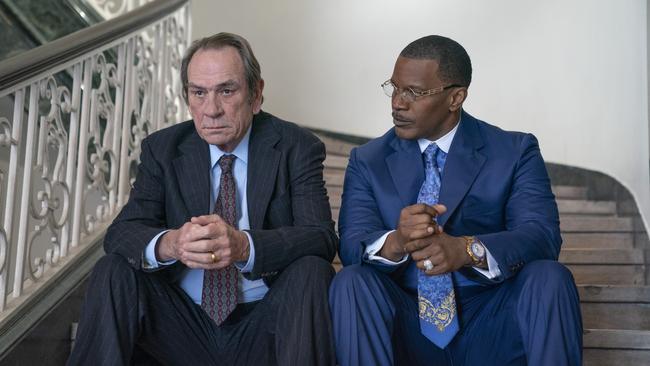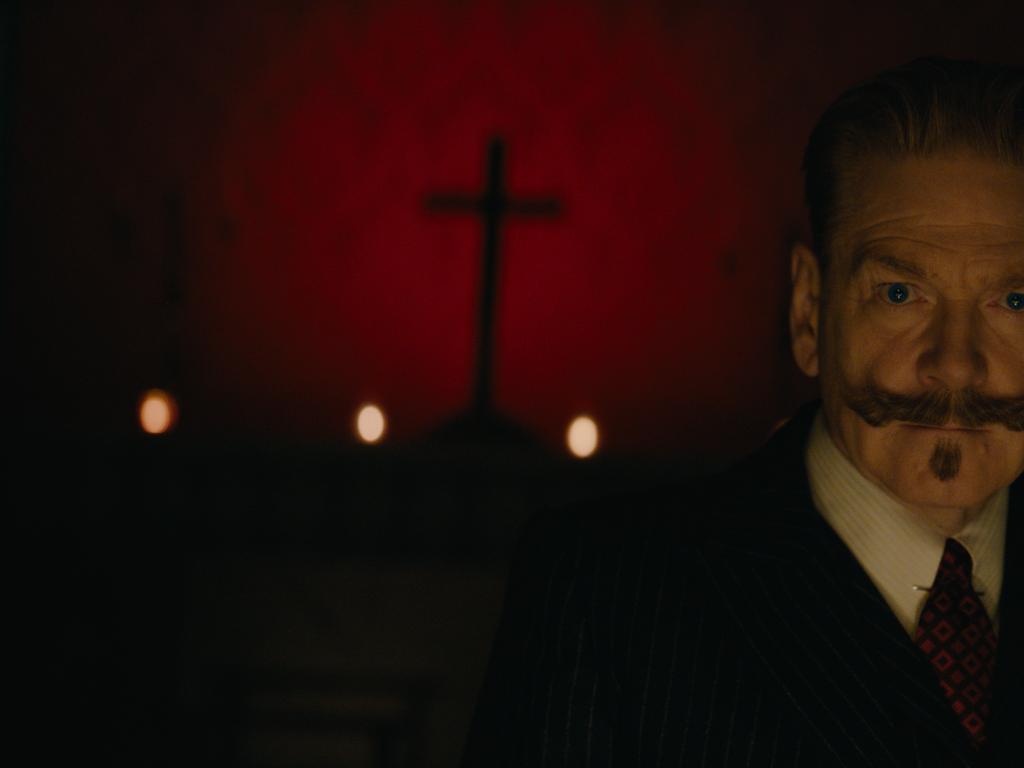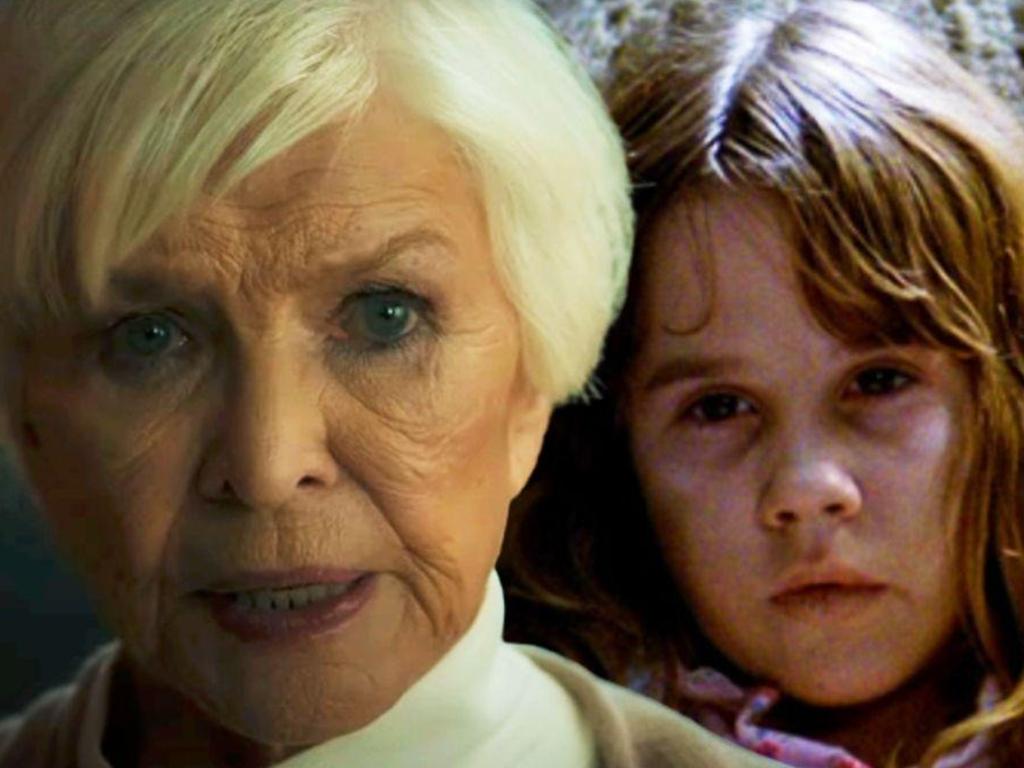Killers of the Flower Moon: Scorsese’s epic western a masterpiece
Every moment Leonardo DiCaprio and Robert DeNiro share the screen will make you wish the cinematic gods had intervened to make them work together more often.

Killers of the Flower Moon (MA15+)
In cinemas from October 19
★★★★½
Masterpiece, like champion and legend, is a word that tends to be overused. Yet the overuse of such words does not mean they should be abandoned. Martin Scorsese’s Killers of the Flower Moon is a masterpiece.
The sheer scale of this epic western, set in Oklahoma in the 1920s, means there are some obvious upfront questions. At 207 minutes, is it too long? No. Not a minute is wasted. I would have stayed put for more, as would have my 18-year-old co-viewer.
Is it the first time Leonardo DiCaprio and Robert DeNiro have worked together? No. It’s the second time, following the 1993 adaptation of Tobias Wolff’s superb memoir This Boy’s Life. Every moment they share the screen will make you wish the cinematic gods had intervened to make them work together more often.
Should this film be watched in a cinema? Yes, yes, yes. From the opening scene, in which Native Americans dance under a shower of oil, the vastness of the landscape and the people in it is captured by Mexican cinematographer Rodrigo Prieto in his fourth film for Scorsese after The Wolf of Wall Street (2013), Silence (2016) and The Irishman (2019).
Prieto also shot Ang Lee’s Brokeback Mountain (2005) and Greta Gerwig’s current blockbuster Barbie. Like Barbie and Christopher Nolan’s Oppenheimer, Killers of the Flower Moon proves that reports of the death of cinema are exaggerated.
That dance in the black rain sets up the fundamental tension of this movie, which is based on David Grann’s 2017 bestseller of the same name. The script is by Scorsese and six-time Academy Award nominee Eric Roth, who won the Oscar on his first nomination for Forrest Gump (1984).
In the late 19th century, the Osage tribe, Native American people of the Great Plains, an almost endless flatland east of the Rocky Mountains, was moved, first to Kansas and then to Oklahoma.
That forced dispossession and relocation was the known known. The unknown unknown was that the Oklahoma reservation sat on a sea of “black gold”. Scorsese uses black-and-white, newsreel-like footage to show what happened next.
Vastly rich Native Americans being ferried about in Buicks by white chauffeurs and swinging golf clubs on exclusive courses. It was such a reversal of the way the west was won that something had to happen, and it did.
The director switches to colour. A train pulls into the well-to-do town of Fairfax and Ernest Burkhart (DiCaprio), still in his World War I doughboy uniform, alights. “Well, well, well, our war hero has arrived,’’ says his smiling uncle, William Hale (DeNiro), who is a rich cattle baron. The two men – Burkhart and Hale (DiCaprio and DeNiro) – hug and this moment alone is worth seeing the film for, as in another, a little later, when their relationship becomes even more physical.
Hale hires his nephew as a jack-of-all-trades. He tells him the Osage are “the finest, most beautiful people on God’s earth”. But, as with his “war hero” welcome, what Hales says may not be what he means.
DiCaprio is fascinating as this plain-looking, less-than-bright, easy-to-manipulate young man. He says he loves money and likes women. His uncle advises him that, “If you’re going to make trouble, make it big”.
The woman he likes – perhaps loves – is from the Osage tribe. Mollie (a standout performance by Lily Gladstone) is smarter than her suitor – “He’s a coyote,’’ she tells her friends – but she marries him anyway. “He has nice eyes,’’ she adds with a laugh.
DeNiro has made some flimsy films in recent years, but here, with the director who knows him so well, his collaborator in other masterpieces such as Taxi Driver (1976) and Raging Bull (1980), he shows why he is one of the greatest. Wait for the scene where his nephew tells him Mollie is pregnant.
Mollie is rich. She’s also diabetic. If she dies, Burkhart will inherit her rights over her oil-rich land. And if this happens, she will not be the first to go. There has been a series of deaths caused by an unexplained “wasting illness”.
Indeed these mysterious deaths – and perhaps a couple more by gunshot – attract the interest of the Bureau of Investigations (later to become the FBI). Tom White (Jesse Plemons, brilliant as ever), a former Texas ranger, now with the BOI, comes to town to look into matters. “Seems more like an epidemic than bad luck,’’ he tells Hale.
This is the set-up. Is this a personal genocide of the Osage, an old west grab for land, money and power? Brendan Fraser and John Lithgow are outstanding in extended cameo roles as lawyers called in when such questions need to be answered.
The music, overseen by Robbie Robertson, underpins the tension, the doubt, the danger that permeates this non-stop historical drama. The regular background music sounds like a heartbeat or a pulse. The question is whether it will stop and go silent.
As this movie neared its unwanted end, I wondered how the director would handle the final scenes of this drawn-from-history story. Would he do what almost everyone does and show photographs of the real people involved, alongside captions of what happened to them?
He does not. What he does is a reminder that he’s not just a director, he’s Martin Scorsese, a film-making legend.
The Burial (M)
Amazon Prime
★★★½
If you want a reminder of why Jamie Foxx has an Oscar on his mantelpiece, watch the drawn-from-life American courtroom drama The Burial. He is exhilarating as a flashy African-American defence lawyer who takes on a white client for the first time.
The client is Jeremiah O’Keefe (fellow Oscar winner Tommy Lee Jones), who runs a funeral business in Mississippi that has been in his family for more than 100 years. He has 13 children and 24 grandchildren and considers the business his legacy to them.
The opposition is a Canadian funerals conglomerate and the case is a contract between it and O’Keefe to help him out of debt. He claims the contract was a sham designed to bankrupt him so his business could be bought on the cheap.
“Do you think that 75 years of age is a good time to start suing people?” asks his wife (Pamela Reed).
He does and so does Florida-based personal injury lawyer Willie E. Gary (Foxx), who has not lost a case in 12 years. However, he has never had a white client and has never worked in contract law.
It’s a junior lawyer (Mamoudou Athie) who persuades him to take the case. He sees a broader, race-based story where poor communities, especially black ones, are being ripped off to bury their dead.
Exposing a company that exploits the $US20bn-a-year “death care” industry would attract national attention and put Gary in the same league as Clarence Darrow and “motherf--king Johnnie Cochran”.
So we have the set-up: mid-1990s, black lawyer, white client, soul-sucking corporation and a courtroom in Mississippi.
Yet while the witness box scenes are good, particularly when O’Keefe, a war hero, is cross-examined, the best moments in this 126-minute film happen elsewhere.
Wait, for example, for the scene on Gary’s private jet, Wings of Justice, where he and O’Keefe discuss how they, the sons of dirt-poor families, became who they are.
Similarly, the scene where, mid-trial, the parties adjourn to a room to discuss a settlement. Music matters in each case.

This movie is the third feature of American filmmaker Maggie Betts, following the documentary The Carrier (2010) and the drama Novitiate (2017). She co-wrote the script with playwright Doug Wright, who won a Pulitzer and an Emmy for his 2003 play I Am My Own Wife.
The Burial loosely follows a real case that was the subject of an 1999 article in The New Yorker.
The script is full of the sort of zingers that make a legal drama sing. “We got out-blacked and out-womaned,’’ one of Gary’s offsiders says when they learn who will defend the Canadians.
Foxx is terrific as the flamboyant but anxious lawyer – “I’d rather someone pull a gun on me and blow my head off than lose a case” – and Jones pulls out some surprises that make O’Keefe less conservative than he first appears.
The support cast is in fine form, too, from Jurnee Smollett as the young and formidable opposing lawyer (her answer when asked if she’d rather prosecute or defend OJ Simpson is priceless), to Bill Camp from Better Call Saul as the head of the funerals conglomerate (“We’re in the golden era of death,’’ he says with relish), to Alan Ruck from Succession as O’Keefe’s long-time (and white) family lawyer.
The punchy performances, snappy script and exploration of a real world problem – people being milked dry when they are in mourning – make this an entertaining, thoughtful and at times humorous legal drama.






To join the conversation, please log in. Don't have an account? Register
Join the conversation, you are commenting as Logout